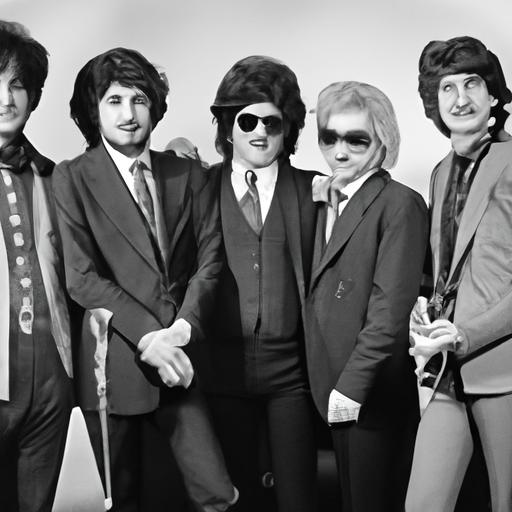When Traveling Behind a Motorcycle: Ensuring Safe and Responsible Driving
Introduction
Picture yourself cruising down the open road, the wind in your hair and the sun on your face. Suddenly, you find yourself behind a motorcycle, sharing the asphalt with this two-wheeled beauty. As a responsible driver, you understand the importance of safe driving practices and the need to adapt to different road users. In this article, we will delve into the intricacies of traveling behind a motorcycle, equipping you with essential tips to ensure a safe and harmonious journey.
Importance of safe driving practices
When we take the wheel, we hold the power to protect ourselves and those around us. Safe driving practices are not merely guidelines; they are a responsibility we owe to ourselves and fellow road users. By prioritizing safety, we contribute to the overall well-being of our communities.
Introduction to traveling behind a motorcycle
Motorcycles, with their nimble maneuverability and freedom-inducing allure, have become a common sight on our roads. However, driving behind a motorcycle presents its own unique set of challenges. The smaller size and agility of motorcycles demand heightened awareness and adaptability from drivers sharing the road. Understanding these challenges will empower you to navigate behind motorcycles with confidence and caution.
Overview of the article’s content
In this comprehensive guide, we will explore the art of traveling behind a motorcycle. We will discuss safety tips to maintain an appropriate following distance, anticipate motorcyclists’ maneuvers, and effectively utilize mirrors. Additionally, we will delve into communication and signaling techniques that foster clearer interactions on the road. We will also address how to handle different road and weather conditions to ensure a seamless and secure journey. By the end of this article, you will be equipped with the knowledge to enhance your driving experience when traveling behind a motorcycle.
Stay tuned for the following sections, where we will delve deeper into each topic, unraveling the secrets to safe and considerate driving behind motorcycles. Remember, being a responsible driver is not just about reaching your destination; it’s about creating a safe and enjoyable journey for everyone on the road.
- words*
Understanding the challenges of driving behind a motorcycle
A. Motorcycle’s smaller size and visibility issues
When traveling behind a motorcycle, one of the primary challenges is the motorcycle’s smaller size and potential visibility issues. Unlike larger vehicles, motorcycles can easily get lost in blind spots or obscured by other objects on the road. As a driver, it’s crucial to be extra vigilant and consistently scan your surroundings to detect motorcycles. This means checking your mirrors frequently and being mindful of smaller vehicles, especially when changing lanes or making turns.
B. Necessity of maintaining a safe distance
Maintaining a safe distance is paramount when driving behind a motorcycle. Motorcycles have a shorter stopping distance compared to cars, so it’s crucial to leave ample space between your vehicle and the motorcycle ahead. This distance gives both parties enough time to react and maneuver safely in unexpected situations. The general rule of thumb is to maintain a following distance of at least three seconds. However, certain factors such as weather conditions, road quality, and the motorcycle’s speed may require you to adjust the distance accordingly.
C. Recognizing and anticipating motorcyclists’ maneuvers
To ensure a smooth and harmonious flow of traffic, it’s essential to recognize and anticipate the maneuvers of motorcyclists. Motorcyclists often change lanes, adjust their speed, or make sudden turns. By staying alert and observant, you can anticipate their actions and adjust your driving accordingly. Pay attention to their turn signals, hand gestures, and body language, as these subtle cues can provide valuable insight into their intentions. By being proactive and predicting their movements, you can enhance your overall driving experience and create a safer environment for everyone on the road.
Understanding the unique challenges of driving behind a motorcycle sets the foundation for responsible and considerate driving. In the upcoming sections, we will delve deeper into specific safety tips and communication techniques that will further enhance your driving skills when sharing the road with motorcycles.
- words*
Safety Tips for Driving Behind a Motorcycle
As you navigate the roads behind a motorcycle, it is crucial to prioritize safety and adopt proactive driving strategies. By maintaining a safe following distance, anticipating motorcyclists’ actions, and utilizing mirrors effectively, you can enhance your awareness and minimize potential risks.
Maintaining a Safe Following Distance
When traveling behind a motorcycle, it is essential to maintain a safe following distance to allow for ample reaction time. This distance ensures that you have enough space to respond to sudden changes in speed or unexpected maneuvers. The ideal following distance may vary depending on the scenario, but a general rule of thumb is to maintain a distance of at least two to three seconds.
Recommended Distance in Different Scenarios
In urban areas with heavy traffic, it is advisable to increase the following distance to account for frequent stops and sudden lane changes. On highways or open roads, where higher speeds are involved, a greater distance should be maintained to accommodate for increased stopping distances and potential hazards.
Adjusting Distance Based on Weather and Road Conditions
Adverse weather and road conditions can impact a motorcycle’s stability and maneuverability. In situations like rain, snow, or slippery surfaces, it is crucial to increase your following distance. This adjustment allows for safer braking and reduces the risk of collisions due to reduced traction.
Anticipating Motorcyclists’ Actions
As a responsible driver, it is essential to anticipate the actions of motorcyclists. By observing their turn signals and hand gestures, you can better predict their intentions and adjust your driving accordingly. Motorcyclists may not have the luxury of large turn signals or brake lights, making it crucial to pay attention to subtle cues.
Watching for Turn Signals and Hand Gestures
Motorcyclists often use hand signals to indicate their intention to change lanes, turn, or stop. Familiarize yourself with these signals to anticipate their actions. Additionally, keep a keen eye on their turn signals, which may be smaller or less visible than those on larger vehicles.
Predicting Lane Changes and Speed Adjustments
Motorcyclists are often more agile than other vehicles, allowing them to change lanes and adjust speeds swiftly. Stay alert and anticipate these maneuvers by observing their body language, head movements, or slight shifts in positioning. This proactive approach helps you maintain a safe distance and react promptly.
Utilizing Mirrors Effectively
Proper use of mirrors is crucial when driving behind a motorcycle, as it allows you to monitor their position and movements without relying solely on direct sight.
Regularly Checking Mirrors for Motorcyclists
Frequently check your mirrors to identify any approaching motorcycles. By maintaining a habit of regularly scanning your mirrors, you increase your overall awareness of the road environment and minimize blind spots.
Adjusting Mirrors to Minimize Blind Spots
To reduce blind spots, adjust your mirrors to provide maximum visibility. Ensure that you can see the entire rear window of your vehicle, with minimal overlap between the side and rearview mirrors. This adjustment will help you stay informed about the presence and movements of motorcycles around you.
By implementing these safety tips, you can confidently navigate the roads behind a motorcycle, fostering a secure and harmonious driving experience.
- words*
Communication and Signaling Techniques
Using Turn Signals Appropriately
When traveling behind a motorcycle, effective communication through the use of turn signals is crucial for maintaining a safe and harmonious flow of traffic. By signaling your intentions early and clearly, you provide motorcyclists with the necessary information to anticipate your next move.
Signaling Intentions Early and Clearly
To ensure that motorcyclists are aware of your intended actions, it is vital to activate your turn signals well in advance. By doing so, you give them ample time to react and adjust their riding accordingly. Remember, motorcycles have a smaller profile compared to cars, making it more challenging for them to anticipate sudden lane changes or turns.
Giving Motorcyclists Ample Time to React
In addition to signaling early, it is equally important to maintain your signal until you have fully completed the maneuver. This not only alerts motorcyclists to your intentions but also provides them with ample time to adjust their speed or position on the road. By giving them the necessary time to react, you contribute to a safer and more predictable driving environment.
Properly Using Headlights and Brake Lights
Apart from turn signals, your vehicle’s headlights and brake lights play a pivotal role in enhancing visibility to motorcyclists when traveling behind them. Utilizing these lights correctly can greatly improve communication and reduce the risk of accidents.
Enhancing Visibility to the Motorcyclist
Ensure that your headlights are always in good working condition and properly aligned. This helps increase your visibility to motorcyclists, especially during low-light conditions or adverse weather. Additionally, consider using your headlights even during the daytime, as this can further enhance your presence on the road.
Avoiding Abrupt Braking or Changes in Speed
Sudden and unpredictable braking or changes in speed can catch motorcyclists off guard and potentially lead to accidents. When decelerating or slowing down, it is crucial to signal your intentions by gently applying the brakes and gradually reducing your speed. This allows motorcyclists behind you to anticipate your actions and adjust their own speed accordingly.
By effectively utilizing turn signals, headlights, and brake lights, you establish clear lines of communication with motorcyclists, fostering a safer and more cooperative driving environment. Let’s move on to the next section, where we will explore how to handle different road and weather conditions when traveling behind a motorcycle.
- words*
Handling Different Road and Weather Conditions
Adapting to Various Road Surfaces
When traveling behind a motorcycle, it is crucial to adapt to different road surfaces to ensure a smooth and safe journey. Motorcycles are more susceptible to instability on uneven or slippery roads, making it essential for drivers to exercise caution and adjust their driving accordingly.
1. Account for Potential Motorcycle Instability
Motorcycles have a smaller footprint and only two points of contact with the road, making them more vulnerable to uneven surfaces. Potholes, gravel, or debris can pose significant challenges for motorcyclists. To ensure their safety and maintain a safe distance, you should be prepared for potential instability caused by these road conditions. Give motorcyclists extra space and avoid sudden maneuvers that could startle or destabilize them.
2. Avoiding Sudden Maneuvers on Uneven or Slippery Roads
Uneven or slippery roads can compromise traction and control for both motorcycles and other vehicles. When traveling behind a motorcycle, it is vital to maintain a consistent speed and avoid sudden acceleration, braking, or lane changes. Smooth and predictable movements will help create a safer environment for all road users, allowing motorcyclists to navigate the challenges of uneven or slippery surfaces with greater ease.
Adjusting Driving Behavior During Adverse Weather
Weather conditions can significantly impact the safety and stability of motorcycles. As a responsible driver, it is crucial to understand the potential effects of rain, wind, or fog on motorcycles and adjust your driving behavior accordingly.
1. Understanding the Impact of Rain, Wind, or Fog on Motorcycles
Rain, wind, and fog can reduce visibility and decrease traction, posing additional risks for motorcyclists. When traveling behind a motorcycle in adverse weather, be mindful of the reduced visibility and the potential for motorcyclists to adjust their speed or lane position. Allow extra space and be patient, ensuring that you maintain a safe distance and remain aware of their movements.
2. Allowing Extra Stopping Distance in Wet or Icy Conditions
Wet or icy conditions can significantly affect braking distances for motorcycles. When following a motorcycle in such weather, it is crucial to increase your following distance to allow for the extended stopping time required by motorcyclists. By providing this extra buffer, you contribute to a safer environment for everyone on the road.
By adapting your driving behavior to different road surfaces and weather conditions, you demonstrate respect and consideration for the challenges faced by motorcyclists. Remember, a little extra caution goes a long way in ensuring a safe and enjoyable journey for everyone.
- words*
Conclusion
As we conclude our exploration into traveling behind a motorcycle, it is evident that safe driving practices and responsible behavior are essential for a harmonious coexistence on the road. By maintaining a safe following distance, anticipating motorcyclists’ actions, and utilizing mirrors effectively, we can mitigate risks and enhance road safety.
Communication and signaling techniques play a crucial role in fostering clear and concise interactions with motorcyclists. Using turn signals appropriately, along with properly utilizing headlights and brake lights, enhances visibility and allows for smoother navigation.
Adapting to different road and weather conditions is vital when traveling behind a motorcycle. Being aware of the impact of road surfaces and adjusting driving behavior during adverse weather can prevent accidents and ensure a seamless journey.
Remember, the road is a shared space, and treating all road users with respect and consideration is paramount. By adhering to safe driving practices and being mindful of motorcycles, we can create a safer and more enjoyable experience for everyone.
In conclusion, when traveling behind a motorcycle, it is crucial to prioritize safety, adapt to different road conditions, and communicate effectively. By implementing the tips and techniques discussed in this article, you can become a responsible driver who fosters a culture of safety on the road.
So, next time you find yourself cruising down the road behind a motorcycle, embrace the opportunity to share the journey responsibly. Together, let’s make the roads safer and create a positive driving experience for all.
- words*





